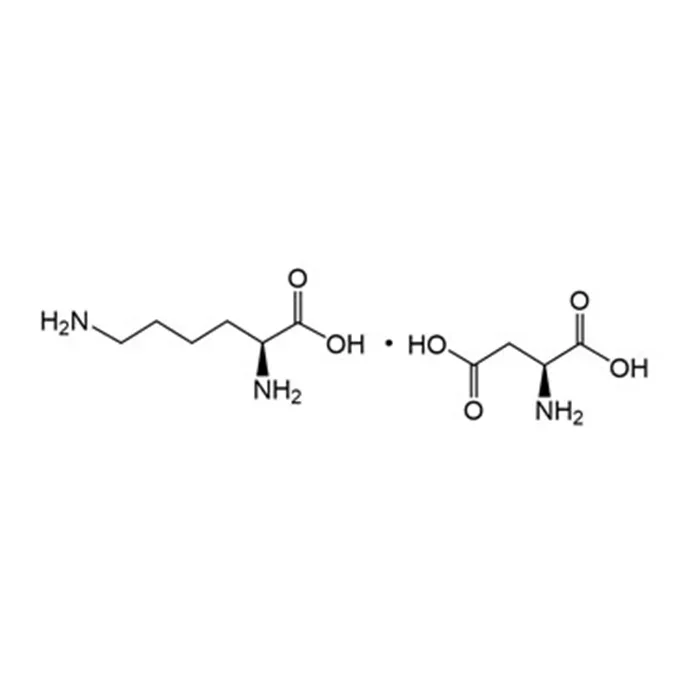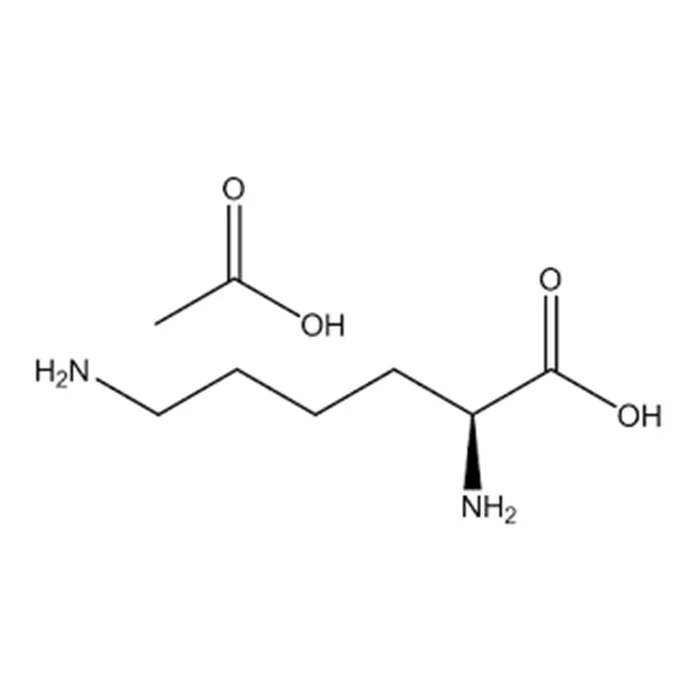Welcome to the fascinating world of biotechnology, where tiny building blocks called amino acids play a crucial role in shaping the future. If you've ever wondered how scientists are harnessing the power of nature to revolutionize our lives, then this blog post is for you. Today, we'll delve into the applications of amino acids in modern biotechnology and explore how these remarkable molecules are playing a pivotal role in diverse fields such as medicine, agriculture, and environmental sustainability. So buckle up and get ready to unravel the mysteries behind these extraordinary compounds that hold immense potential for shaping tomorrow's world!
What are amino acids?
Amino acids are the fundamental building blocks of life. They are organic compounds that contain both an amino group (-NH2) and a carboxyl group (-COOH). These small molecules join together to form proteins, which are essential for countless biological processes in our bodies.
There are 20 different types of amino acids that can be found in proteins. Each type has its own unique chemical structure and properties. Some examples include alanine, glycine, leucine, and lysine. The sequence and arrangement of these amino acids determine the shape and function of the protein they create.
In addition to their role as protein components, amino acids also serve various functions in cells. They act as neurotransmitters, carrying signals between nerve cells in our brains. Amino acids also play a crucial role in metabolism by helping to break down food into energy.
Interestingly, not all organisms can produce all types of amino acids on their own. Humans, for example, cannot synthesize nine out of the 20 essential amino acids needed for optimal health. This is why it's important to obtain these essential amino acids from dietary sources or supplements.
Understanding the structure and function of amino acids is vital in many scientific disciplines beyond biology alone. Chemists study them to develop new drugs and synthetic materials with specific properties. Engineers use them as building blocks for biotechnology applications such as biofuels production or enzyme engineering.
The versatility and importance of these tiny molecules cannot be overstated - they truly form the foundation upon which life itself is built! So next time you tuck into a meal or marvel at advancements in medicine or technology remember: behind it all lies the incredible power packed within those humble little amino acids.

What are the different types of amino acids?
Amino acids are organic compounds that play a crucial role in various biological processes. There are 20 different types of amino acids found in nature, each with its own unique chemical structure and characteristics.
These amino acids can be classified into two categories: essential amino acids and non-essential amino acids. Essential amino acids cannot be synthesized by the body and must be obtained through diet or supplements. Some examples of essential amino acids include leucine, isoleucine, valine, lysine, methionine, phenylalanine, threonine, tryptophan, and histidine.
On the other hand, non-essential amino acids can be produced by our bodies using other molecules as building blocks. Examples of non-essential amino acids include alanine, arginine, asparagine, aspartic acid,cysteineserineserinetyrosinetyrosinerythrozincitrullinelysinelysinedeprolineprolineglutamic acidglutamineleucinenorleucinemethioninetryptophanthreoninethreoninetheonaddeinsalphenylalaninicisoleucinerodisomeridhistidinesskinnisthuratelysinergyconhydriglutamatepepcoquinolinemethyllysinglycinenitrogenousaminocapricacidessaintimidomethylexyureaopropylopropyltyrosinate
Each type of amino acid contributes to various physiological functions within the body. They serve as building blocks for proteins synthesis and function as neurotransmitters in the nervous system. Additionally,pimples they have roles in energy production,growth hormone secretion,and immune system support.
Understanding the different types of amino acids is vital in biotechnology applications where their specific properties can be harnessed for various purposes such as protein engineering,enzymeresearch,and drug development.
The diversity afforded by the different amino acids allows biotechnologists to manipulate and tailor proteins to suit specific.
How are amino acids used in biotechnology?
Amino acids play a crucial role in the field of biotechnology. These small organic compounds are the building blocks of proteins, which are essential for various biological processes. In modern biotechnology, amino acids are used in a variety of ways to advance scientific research and development.
One important application of amino acids is their use in protein synthesis. By providing the necessary amino acid components, scientists can engineer and produce specific proteins with desired properties. This allows for the production of therapeutic proteins, enzymes for industrial applications, and even biofuels.
Amino acids also serve as precursors for the production of other valuable molecules through fermentation or chemical synthesis. For example, certain strains of bacteria can be engineered to produce amino acids that are used as food additives or nutritional supplements.
In addition to their direct application in production processes, amino acids are also utilized as tools in biotechnological research. They can be labeled with fluorescent markers or isotopes to track cellular processes or study protein interactions within living organisms.
Furthermore, amino acid residues play a critical role in recombinant DNA technology. Genetic engineering techniques often involve manipulating specific regions within genes using restriction enzymes that recognize particular sequences containing specific amino acid residues.
The versatility and importance of amino acids make them indispensable tools in modern biotechnology research and applications. By harnessing their power, scientists continue to push boundaries and innovate across various fields including medicine, agriculture, environmental science, and more.

What are the benefits of using amino acids in biotechnology?
Amino acids play a crucial role in modern biotechnology and offer numerous benefits for various applications. One significant advantage is their ability to serve as building blocks for the production of proteins, which are essential components of cells and tissues. Through genetic engineering, scientists can manipulate amino acid sequences to create tailored proteins with specific functions.
Another benefit is their potential use in pharmaceuticals. Amino acids can be modified or combined with other compounds to develop new drugs that target specific diseases or conditions. For example, insulin, a hormone used to treat diabetes, consists of two amino acid chains connected by disulfide bonds.
Furthermore, amino acids have proven useful in food production and agriculture. They are commonly added as supplements in animal feed to promote growth and improve overall health. In plant cultivation, certain amino acids enhance nutrient absorption and stress tolerance, leading to increased crop yields.
Additionally, amino acids find application in cosmetic products due to their moisturizing properties. They help hydrate the skin and hair while promoting collagen synthesis for improved elasticity and texture.
Moreover, these versatile molecules contribute significantly to environmental sustainability efforts. Amino acids derived from renewable resources can be used as eco-friendly alternatives to petroleum-based chemicals in various industrial processes.
The benefits of using amino acids in biotechnology are vast and diverse. Their versatility allows them to be utilized across multiple industries such as pharmaceuticals, food production,and cosmetics while also offering environmentally friendly solutions.
These advantages make them valuable tools for researchers looking to advance technological innovations through biological systems.
Are there any risks associated with using amino acids in biotechnology?
Risks associated with using amino acids in biotechnology are a crucial consideration for scientists and researchers. While amino acids offer numerous benefits, it is important to address any potential drawbacks.
One concern involves the production of genetically modified organisms (GMOs) using amino acids. Although GMOs have been developed to enhance crop yield and improve disease resistance, there are concerns about their impact on the environment and human health.
Another risk lies in the possibility of allergic reactions. Certain individuals may be hypersensitive or allergic to specific amino acids, leading to adverse effects when exposed to them through biotechnology products or medications.
Contamination is another potential risk associated with amino acid usage. If not properly purified or handled, impurities can affect the quality and safety of products derived from amino acids.
Additionally, improper dosage or administration of certain amino acid-based drugs can lead to side effects such as gastrointestinal issues or metabolic imbalances.
While there are risks involved in using amino acids in biotechnology applications, proper research, testing, and safety protocols help mitigate these concerns. By identifying potential risks early on and implementing appropriate measures, scientists can continue harnessing the power of amino acids while ensuring safety and efficacy in biotechnological advancements.

Conclusion
Amino acids play a crucial role in modern biotechnology and have a wide range of applications. These building blocks of proteins are essential for the growth and development of cells, making them invaluable tools in various biotechnological processes.
From pharmaceuticals to agriculture, amino acids are used to produce therapeutic drugs, improve crop yields, and develop innovative solutions for environmental challenges. Their versatility allows scientists to manipulate biological systems at the molecular level, leading to advancements in medicine, food production, and biofuel development.
The benefits of using amino acids in biotechnology are numerous. They offer a sustainable alternative to traditional chemical synthesis methods by utilizing natural resources more efficiently. Amino acid-based products also tend to be safer for both human health and the environment.
However, it is important to acknowledge that there may be risks associated with using amino acids in biotechnology. As with any scientific advancement, careful consideration must be given to potential unintended consequences or ethical implications. Thorough research and stringent regulations help mitigate these risks and ensure responsible use.
In conclusion, the applications of amino acids in modern biotechnology continue to expand as scientists unlock their full potential. By harnessing the power of these fundamental compounds found within all living organisms, we can create innovative solutions for some of our most pressing challenges while promoting sustainability and improving quality of life for future generations.
Sempoll Bio-Tech production of chiral amino acids and derivatives, while the development and production of pharmaceutical intermediates, food additives, relying on special biosynthetic technology, the main development of the baby to add high-end food amino acids and plant extracts of amino acids.If you have any need,welcome to contact us.sales@sempollpharm.com







